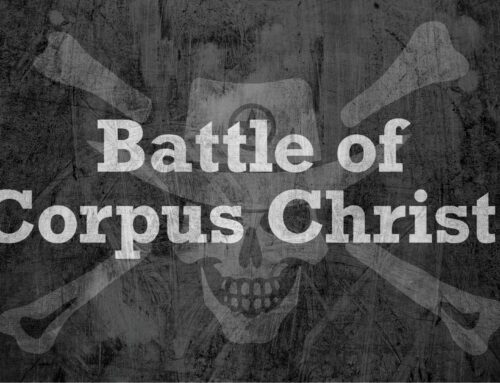The Battle of Coleto Creek: A Pivotal Engagement in the Texas Revolution (March 19-20, 1836)
Introduction
The Battle of Coleto Creek, fought from March 19 to March 20, 1836, was a pivotal engagement in the Texas Revolution. This battle involved Texian forces led by Colonel James Fannin clashing with Mexican troops under General José de Urrea near Coleto Creek in Goliad County, Texas. The battle ended in a Mexican victory and led to the infamous Goliad Massacre, further fueling the Texian resolve for independence.
Background of the Battle
Rising Tensions and the Texas Revolution
By early 1836, the Texas Revolution was intensifying, with Texian forces striving to gain independence from Mexico. The fall of the Alamo on March 6, 1836, and the defeat at the Battle of Refugio heightened the urgency among Texian forces to consolidate and strengthen their position. The Battle of Coleto Creek was a critical attempt by the Texians to retreat and regroup.
Strategic Importance of Coleto Creek
Coleto Creek, located near the town of Goliad, was strategically significant as it was a route for Texian forces attempting to retreat from Goliad to Victoria. Control of this area would enable the Texians to evade the pursuing Mexican army and possibly regroup with other Texian forces.
Preparations and Mobilization
Texian Forces and Leadership
The Texian forces, numbering around 300-400 men, were commanded by Colonel James Fannin. Fannin had been stationed at Fort Defiance in Goliad and, following the fall of the Alamo and the urgent need to retreat, decided to move his forces toward Victoria. The retreat began on March 19, 1836, but was slowed by the heavy baggage and artillery the Texians were transporting.
Mexican Forces and Strategy
Mexican forces under General José de Urrea were pursuing the Texian forces with the objective of preventing their retreat and destroying the rebel force. Urrea’s army was well-trained and significantly outnumbered the Texian defenders. The Mexican strategy involved rapid movement to intercept and encircle Fannin’s forces.
The Battle Begins: March 19, 1836
Texian Retreat and Initial Contact
On March 19, 1836, as Fannin’s forces retreated from Goliad, they encountered Mexican troops near Coleto Creek. The Texians hastily formed a defensive square in an open prairie, using their wagons and artillery to create a makeshift fortification. Despite being surrounded, Fannin decided to make a stand.
Initial Skirmishes
Throughout the afternoon, Mexican forces launched several attacks on the Texian positions. The Texians, utilizing their artillery and superior marksmanship, repelled the initial assaults. The battle continued into the evening, with both sides suffering casualties.
The Main Engagement: March 20, 1836
Renewed Mexican Assaults
On the morning of March 20, 1836, General Urrea ordered renewed assaults on the Texian positions. The Mexican troops, now reinforced, launched a series of coordinated attacks. The Texians, low on water and ammunition, struggled to maintain their defensive line.
Texian Surrender
By midday, realizing the futility of further resistance and hoping to negotiate terms, Colonel Fannin agreed to surrender. The Texians were promised that they would be treated as prisoners of war and given honorable terms. The surrender ended the Battle of Coleto Creek, but the ordeal for the Texians was far from over.
The Aftermath of the Battle
Texian Casualties and Captivity
The Battle of Coleto Creek resulted in significant Texian casualties, with around 9 killed and many more wounded. The surviving Texians, numbering approximately 300, were taken captive by the Mexican forces and marched back to Goliad.
Goliad Massacre
Despite the promises made at the surrender, the captured Texians were executed on March 27, 1836, in what became known as the Goliad Massacre. This brutal event, ordered by General Santa Anna, shocked and outraged Texians and supporters of the Texian cause.
Strategic Impact
The defeat at Coleto Creek and the subsequent massacre had a profound impact on the Texas Revolution. The loss of Fannin’s force was a significant blow to the Texian military effort. However, the massacre galvanized Texian resistance and fueled a desire for retribution, which played a crucial role in the ultimate Texian victory at the Battle of San Jacinto.
Legacy and Commemoration
The Battle of Coleto Creek and the Goliad Massacre are remembered as pivotal events in the Texas Revolution. The site of the battle and the massacre are commemorated through historical markers, memorials, and educational programs. These events serve as a reminder of the sacrifices made in the struggle for Texian independence.
Legacy of the Battle of Coleto Creek
Historical Significance
The Battle of Coleto Creek holds a significant place in the history of the Texas Revolution. It marked a crucial attempt by Texian forces to retreat and regroup, demonstrating their determination and resilience despite overwhelming odds.
Cultural Impact
The legacy of the Battle of Coleto Creek and the Goliad Massacre is deeply ingrained in Texan culture. The courage and sacrifice of the Texian soldiers are celebrated in folklore, literature, and popular culture. The battle and massacre serve as symbols of the fight for liberty and the enduring spirit of resistance against oppression.
Modern Reflections
Today, the Battle of Coleto Creek is viewed with a sense of historical pride and reflection. It serves as a reminder of the challenges and sacrifices faced by the early settlers in their quest for independence. The battle’s legacy is honored through education, preservation, and public commemoration.
Conclusion
The Battle of Coleto Creek, fought from March 19 to March 20, 1836, was a pivotal engagement in the Texas Revolution. Despite their determined efforts, the Texian forces were ultimately overwhelmed by the larger and better-equipped Mexican army. The battle highlighted the bravery and sacrifice of the Texian defenders and underscored the challenges they faced in their fight for independence.
By exploring the history and impact of the Battle of Coleto Creek, we gain a deeper appreciation for the courage and resilience of those who fought for Texas independence. The story of this battle underscores the importance of heroism, strategic leadership, and the enduring spirit of freedom that continues to define Texas.





